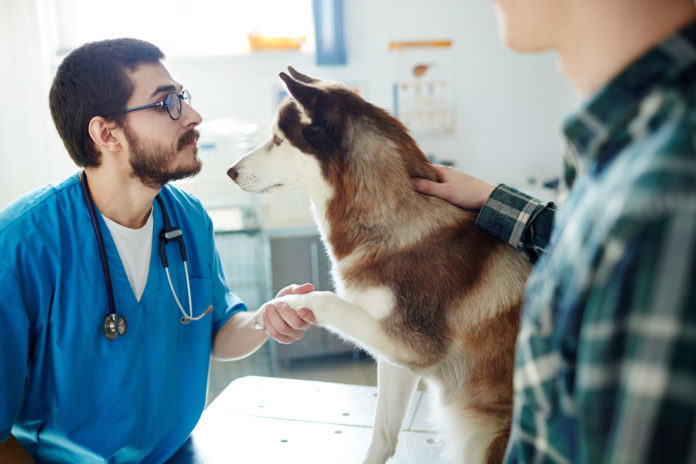From tip to tail, preventative health is essential for furry friends
Written by Beth Reese Cravey
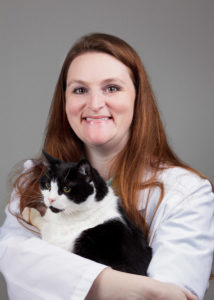
Exercise and weight management for such pets may involve hydrotherapy in a swimming pool or on an underwater treadmill. Hydrotherapy stimulates the cardiovascular system, strengthens muscles, reduces inflammation and allows easier movement of painful joints.
In almost 40 years as an Atlanta veterinary eye specialist, Dr. Gail Powell-Johnson has learned a few truths about the relationship between pets and their owners. One key truth, she said, is that their health is inextricably linked.
“If the pet is not doing well, the client is not doing well,” she says. “If the client is not doing well, the pet is not doing well. “
Evidence of that health bond is the record $18.11 billion U.S. pet owners spent on veterinary care in 2018, according to the American Pet Products Association. After food, veterinary care is the second highest source of pet care spending and the fastest growing category of pet care spending, at 6.1%.
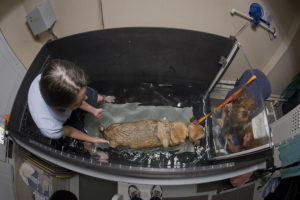 “You take care of your pets’ health; they’re going to take care of yours,” says association President and CEO Bob Vetere.
“You take care of your pets’ health; they’re going to take care of yours,” says association President and CEO Bob Vetere.
So here’s a primer on what to do — and what not to do — to keep your pets fit in three key areas: weight management, vision and dental.
Establishing a relationship with a veterinarian is “essential” to keeping your pet healthy, according to the U.S. Centers for Disease Control and Prevention.
“Whether you have a dog, cat, horse, parakeet, gerbil, bearded dragon or other fun pet, providing regular, life-long veterinary care is important for keeping your pet and family healthy,” according to the Atlanta-based CDC.
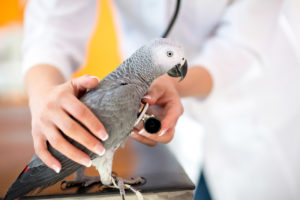 Potential medical issues can be spotted early on in routine veterinary exams before they lead to health crises, says Dr. Jennifer Pittman, an emergency/critical care specialist at the Sandy Springs office of Blue Pearl Veterinary Specialists.
Potential medical issues can be spotted early on in routine veterinary exams before they lead to health crises, says Dr. Jennifer Pittman, an emergency/critical care specialist at the Sandy Springs office of Blue Pearl Veterinary Specialists.
Such is the case with pets in need of weight management, ” a growing problem” in veterinary offices, she said.
An individual pet’s ideal weight depends on multiple factors, including breed and sex. But veterinarians can make that judgment and, if concerned, will perform diagnostic tests to determine if an underlying medical condition is at play. Test results will guide them in recommending treatment, says Pittman, who has been a veterinarian for 14 years.

Overweight pets can become diabetic pets, and they can develop mobility and joint troubles, among other things. Too much food, particularly fatty food, and too many treats, combined with not enough exercise can take a toll, she says.
Pet owners should pay attention to ingredients in pet food and, for puppies and older dogs, use food specially designed for them. Also, limit human foods and treats — or break them in half.
“It’s OK if it’s a teeny, tiny lean piece of chicken,” Pittman says.
Also, pets should get regular exercise. But don’t overdo if they are older, are already overweight or have mobility or joint issues.
For instance, “everybody is told they’ve got to take dogs out for long walks,” she says. “But listen to a pet’s cues. If they are reluctant, or have trouble walking, they may be in pain, and a long walk may do more harm than good. They don’t want to move because they’re uncomfortable.”
Exercise and weight management for such pets may involve hydrotherapy in a swimming pool or on an underwater treadmill. Hydrotherapy stimulates the cardiovascular system, strengthens muscles, reduces inflammation and allows easier movement of painful joints.
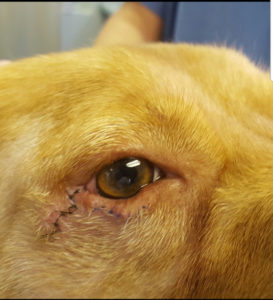 Animal eye specialist Powell-Johnson allocates a full hour for new-patient exams to learn all she can about pets, owners and their lifestyles. She pushes healthy-eating education.
Animal eye specialist Powell-Johnson allocates a full hour for new-patient exams to learn all she can about pets, owners and their lifestyles. She pushes healthy-eating education.
“Nutrition is huge,” she says.
About 70% of patients at her Avondale Estates practice are geriatric dogs, from age 8 to 16. She recommends all pets have a baseline eye exam at age 7 or 8 and annual checks after that.
The most common vision problems Powell-Johnson encounters are dry-eye disease, glaucoma and cataracts. If owners are paying attention, she says, pets show signs of eye trouble.

“When they do face rubs, they’re trying to tell you something,” she says. “I see a lot of that in older patients. They’re in trouble, but by the time they [owners] think something’s going on and have been to a general vet, then to a specialist, you’ve lost weeks. Be proactive.” Powell-Johnson of Atlanta has been a consulting eye care veterinarian for multiple animals at Zoo Atlanta, including longtime elephant resident Kelly. She is also a former Zoo Atlanta board member.
Also, consider a specialist as the first stop.
Just like human medicine, veterinary medicine is very evolved, with specialties ranging from internal and orthopedics to pediatrics, she says. A general practitioner can’t be expected to know all the possibilities.
Even a specialist has to be a detective and ask lots of questions. An owner may speculate an eye abrasion or other injury is the cause if a dog has uncomfortable, red and inflamed eyes, or tries to keep its eyes closed. More likely it is dry-eye disease, an ocular condition commonly diagnosed in dogs.
If a pet’s eye is painful, large and swollen, glaucoma might well be the diagnosis. In wrinkly dogs with extra skin folds or drooping eyes, the eyelids can roll inward or outward, causing irritation to the cornea, chronic ulcers and painful eyes. Sometimes surgery is required.
“It’s like a work of art; you have to recreate the eyelid,” says Powell-Johnson.
Treatment ranges from eye drops and ointment to surgery and removal of an eye. Just as with overall pet care, monitoring by owners and preventative measures are critical.
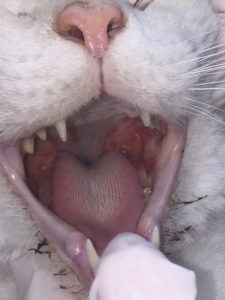 If a pet is prone to excessive grooming, its eyes can get irritated. Visits to professional groomers can also cause trouble, particularly with older animals. Advise groomers to avoid blow drying in a pet’s face or getting soap in its eyes, and to keep hair trimmed tightly around the eyes to avoid irritation, she says.
If a pet is prone to excessive grooming, its eyes can get irritated. Visits to professional groomers can also cause trouble, particularly with older animals. Advise groomers to avoid blow drying in a pet’s face or getting soap in its eyes, and to keep hair trimmed tightly around the eyes to avoid irritation, she says.
Dental care “is one of the most overlooked areas of pet health care,” according to PAWS Atlanta, an animal shelter that has pet dental clinics and wellness clinics. Uninformed owners are likely the cause, says Dr. Erica Noltemeyer, PAWS Atlanta veterinarian.
“Many people just don’t know how to properly care for their pet’s teeth,” she says. “When it comes to pet oral health, there are an abundant number of products on the market and some conflicting recommendations about proper care. I have found that all of this can lead to owner frustration and confusion.”
The most common dental problem Noltemeyer sees in pets is periodontal disease, an infection of the structures around the teeth, including gums, ligament and bone. As much as 90% of cats and dogs older than age 4 have some form of dental disease, she says.
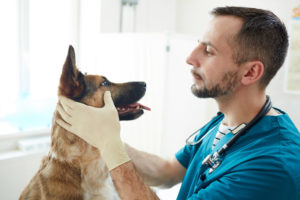 Bacteria from disease or infection in the mouth can cause inflammation and disease in the heart, kidneys and liver. But the most common dental disease is “preventable with routine home care by the owners and monitoring by a veterinarian,” says Noltemeyer.
Bacteria from disease or infection in the mouth can cause inflammation and disease in the heart, kidneys and liver. But the most common dental disease is “preventable with routine home care by the owners and monitoring by a veterinarian,” says Noltemeyer.
“If anything looks different or their pet is acting unusual or painful around the mouth, owners should make an appointment with their veterinarian for an exam,” said Noltemeyer, who has been a veterinarian since 2015.
Treatment varies depending on the cause and scope of disease in the individual pet, but most cases will include polishing to smooth the surface of the teeth and “routine ultrasonic scaling” to remove tartar. In severe cases, diseased teeth may have to be removed.
Preventative measures can be taken at home and at the veterinarian’s office. Pets should be introduced to teeth brushing when they’re young, first by applying pet toothpaste to a piece of gauze and using the gauze to scrub the outer surface of the teeth. Once pets are used to the process, switch to a dental fingerbrush or a regular soft-bristled brush, says Noltemeyer.
Pet’s teeth should be brushed at least every 48 hours, using only use pet toothpaste. Human toothpaste, contains ingredients that pets should not swallow.
Also, owners should be careful about bringing home chew toys and chew treats. Some are helpful, but some are not, Noltemeyer says.
Natural bone, whether processed or fresh; antlers and hooves; and hardpressed rawhide bones and nylon bones can cause tooth fractures. When in doubt, look for the Veterinary Oral Health Council (VOHC) seal of approval on packaging or check with your veterinarian.
For a list of approved products for dogs and cats, go tovohc.org.

Tips to keep your pet healthy
1. Fresh water and high-quality diet, with specialized meals for puppies and senior dogs, no free-feeding
2. Regular exercise to maintain a lean physique
3. Regular veterinarian visits; vaccines, flea — and heartworm — control when recommended
4. Regular dental checkups, teeth-brushing at home
5. No unsupervised roaming
Sources: petmd.com, avma.org, cdc.gov/healthypets/index.html

